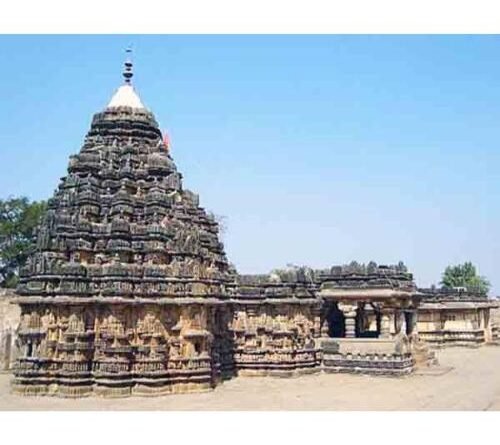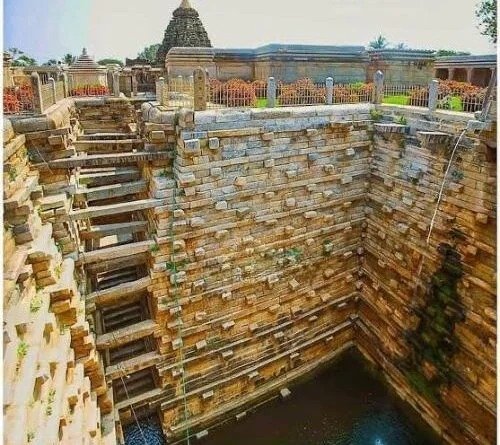Someshwara Temple Lakshmeshwara Gadag,Karnataka
Someshwara Temple at Lakshmeshwara (also spelled Lakshmeshwar) is an important historical and architectural site located in the Gadag district of Karnataka.
Lakshmeshwara has been a historical center for both Jainism and Shaivism, with Someshwara Temple representing the Shaiva tradition.
The Someshwara Temple was built during the reign of the Western Chalukyas, between the 9th and 11th centuries. The region of Lakshmeshwara was an important cultural and religious center during this period. The temple showcases intricate carvings, massive structures, and elements that reflect the artistic brilliance of Chalukyan craftsmen.
Architecture
The Main Sanctum (Garbhagriha) houses a Shivalinga as the main deity. The Mukha Mantapa (Front Hall) is a beautifully carved hall with large pillars. It features intricate sculptures and carvings on its pillars and ceilings, showcasing the temple’s artistic craftsmanship.
The Navaranga (Inner Hall) is a spacious chamber adorned with ornate pillars that depict mythical figures, gods, and floral patterns.
The Nandi Mandapa houses a large statue of Nandi (the sacred bull), which faces the sanctum in a posture of devotion, a common feature in Shiva temples.
The Temple Complex is fortified with a high stone wall, giving it the appearance of a small fort. Surrounding the main temple, several smaller shrines are dedicated to deities such as Parvati, Vishnu, and others, contributing to the temple’s spiritual significance. A large temple tank (pushkarini) is also present within the premises, serving as a sacred water source for rituals and ceremonies.
Sthalapurana
According to the temple legend, Sage Parashurama, the warrior-sage and an incarnation of Lord Vishnu, arrived at Lakshmeshwara to seek absolution for his sins. Having undertaken multiple battles against the Kshatriyas, he was burdened with the consequences of his actions. Seeking redemption, Parashurama performed severe penance at this very site. Pleased with his devotion, Lord Shiva appeared before him and granted him peace. As a mark of this divine blessing, Parashurama is believed to have consecrated the Shivalinga at the temple.
Legend of Goddess Lakshmi
Another significant story associated with the temple explains the origin of the town’s name, Lakshmeshwara. It is believed that Goddess Lakshmi, the consort of Lord Vishnu, once visited this place but was affected by a divine curse. To free herself from its effects, she worshipped Lord Shiva at this temple with deep devotion. Lord Shiva, moved by her sincere prayers, granted her liberation from the curse. Since Goddess Lakshmi attained salvation here, the place came to be known as Lakshmeshwara, meaning “The Land of Lakshmi and Ishwara (Shiva).”
The Disappearance of the Original Idol
A mysterious legend states that the original temple idol vanished under unknown circumstances. Some believe it was stolen by invaders, while others claim that Lord Shiva himself concealed it to protect it from desecration. Later, a new Shivalinga was installed, which continues to be worshipped today, retaining the temple’s spiritual essence.
Pandavas’ Visit to the Temple
Another fascinating story links the temple to the Pandavas from the Mahabharata. During their exile (vanavasa), they traveled across various sacred sites seeking divine blessings. It is said that they visited Someshwara Temple and performed special prayers to Shiva, asking for strength and protection for their future challenges. Their visit is believed to have added to the temple’s sanctity, making it a powerful site for devotees.
Maha Shivaratri, celebrated in February or March, is the most significant festival at Someshwara Temple.Devotees observe a day-long fast and perform Rudrabhisheka, anointing the Shivalinga with milk, honey, and water. The temple remains open throughout the night, filled with continuous prayers, bhajans, and cultural performances.














